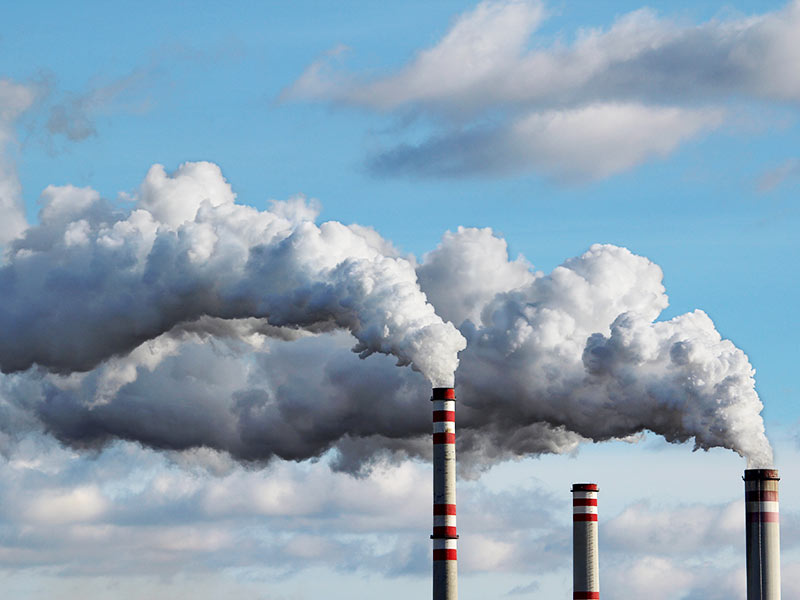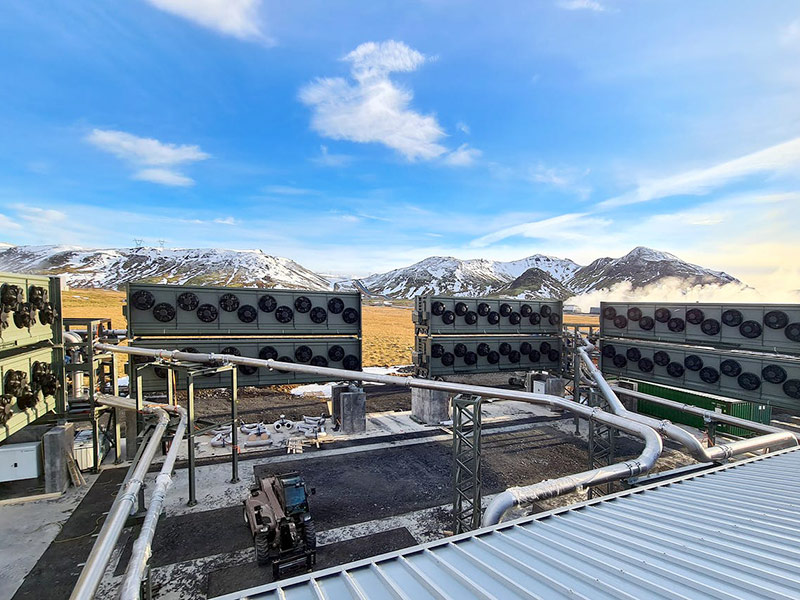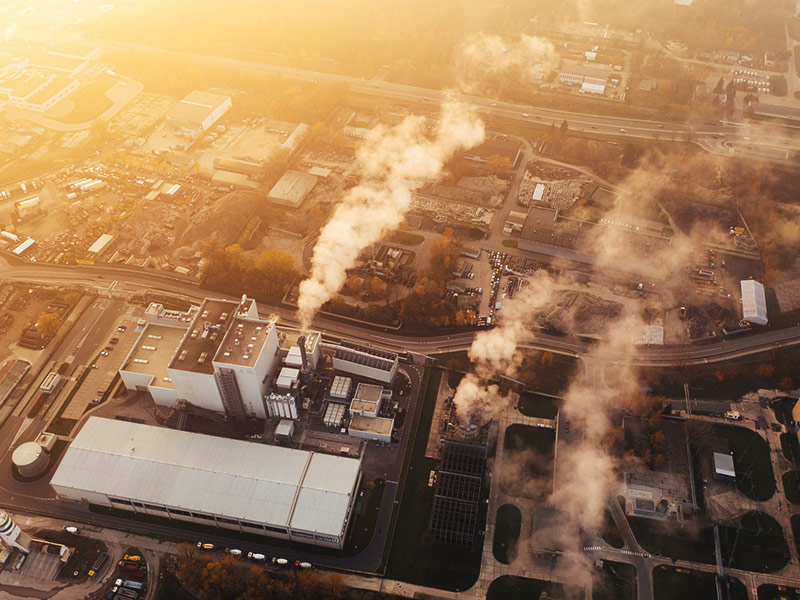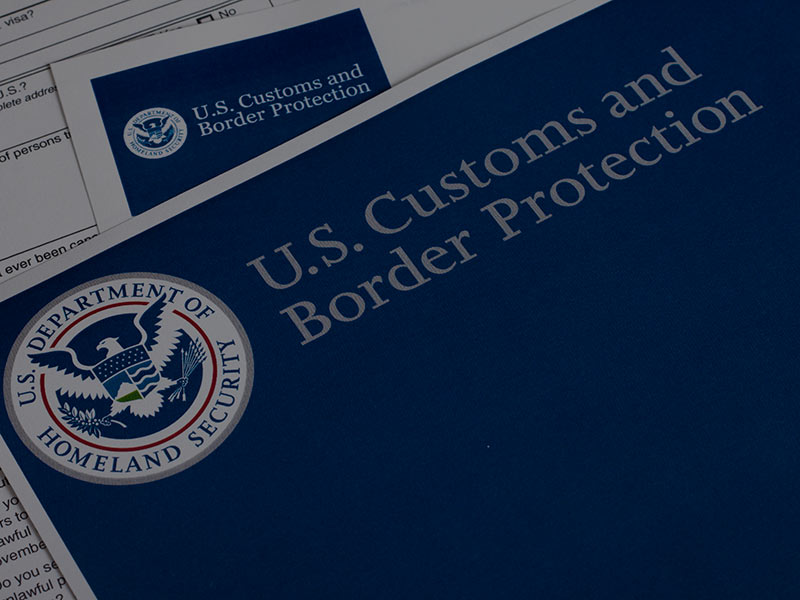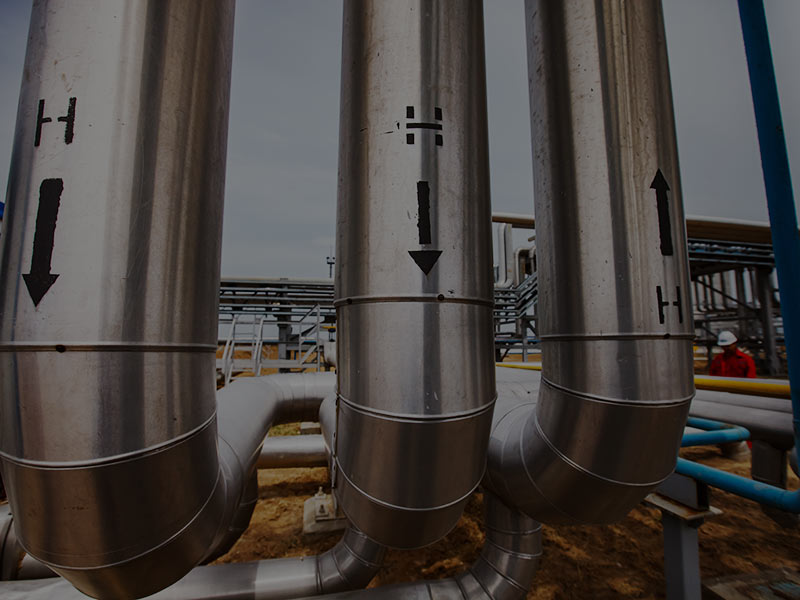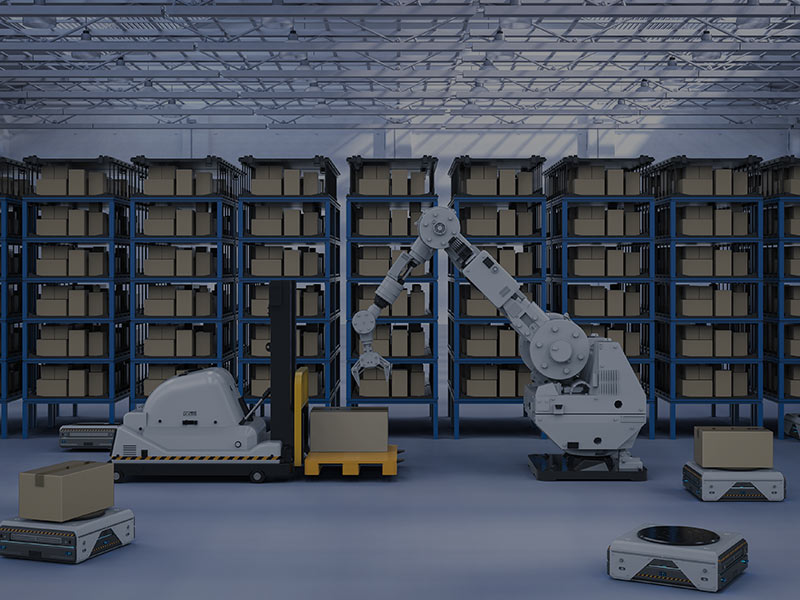
Countries and regulators are ramping up decarbonization targets, putting pressure on the aviation industry to reduce its environmental impact. To reach a goal of net zero aviation by 2050, experts say a transition to Sustainable Aviation Fuel (SAF), which is made from feedstocks that can be grown or produced without the risk of unintended environmental and social consequences and has significantly lower lifecycle emissions than fossil jet fuels, is the most promising decarbonization pathway in the near term. But production will need to ramp up significantly for the aviation industry to meet this target.
What’s New
The aviation industry is trying to bounce back from the COVID-19 pandemic, which the Air Transport Action Group called “the worst crisis in its history,” while also radically reducing its environmental impact. As part of this commitment to reach net-zero carbon emissions by 2050, the global standards developer ASTM International has approved seven SAF production pathways that can produce “drop-in” SAF—fuels that can be used without any changes to the aircraft, engine, or supporting infrastructure.
Although the physical and chemical properties of SAF are similar to conventional jet fuel, the production process creates much lower greenhouse gas (GHG) emissions over the lifecycle of a SAF and minimizes negative environmental and social impacts. SAF can be produced from a variety of sustainable feedstocks, such as cooking oil and other non-palm waste oils from animals or plants; solid waste from homes and businesses, including packaging, textiles and food scraps; and other sources such as waste wood and energy crops (including fast-growing plants and algae). Additionally, as the International Air Transport Association (IATA) notes: “A SAF must demonstrate a net carbon reduction through a lifecycle analysis (LCA), which is an essential element of sustainability certification.”
When total lifecycle emissions are accounted for, SAFs can provide up to an 80 percent reduction in overall CO2 lifecycle emissions compared to fossil fuels. However, they cost considerably more than conventional jet fuels, which has constrained production and uptake by the aviation industry. Drop-in SAFs are also typically blended with conventional kerosene. International specifications for jet fuel developed by the ASTM aim to ensure that this is achieved safely and effectively, with current specifications allowing for a maximum of 50 percent SAF for commercial flights.
While technologies such as electric- and hydrogen-powered aircraft could also radically reduce aviation emissions, they are even further from commercial viability. Airbus is working with CFM International on a hydrogen plane test program, for instance, but does not expect hydrogen-powered passenger aircraft to enter service until 2035. Tom Enders, the CEO of Airbus, estimates that hybrid-electric planes for up to 100 passengers will also be under production by 2030. However, better batteries and more efficient electric motors (and the cooling systems that go with them) are needed to get a fully electric Boeing 747 off the ground. Hydrogen-powered planes also require an extensive redesign of current aircraft and more development of the infrastructure needed to produce, transport, and store hydrogen.
This means that while hydrogen and electric aircraft would be better from an environmental perspective (electric aircraft could reduce emissions by approximately 95 percent, and hydrogen, if generated from renewable energy through electrolysis, emits no CO2 emissions), SAF will be an important bridge between today’s aircraft and these unrealized ones over the next few decades.
The vast majority of SAF in use today comes from the Hydrotreated Esters and Fatty Acids (HEFA) pathway, which uses refined vegetable oils, waste oils, or fats. IEA Bioenergy predicts that this pathway will predominate for at least the next 10-15 years. But to unlock the true potential of these fuels, more investment needs to be dedicated to pathways that have already been approved to develop the technologies, scale up production, and make them commercially viable. Further research is also needed to identify new pathways that could be even more promising. But this investment and research is unlikely to happen without significant guaranteed demand for SAF.
Governments are helping to create this demand through regulations, mandates, and roadmaps. In its Refuel EU aviation plan, for instance, the European Commission proposes a 2 percent SAF mandate by 2025, 5 percent by 2030, and 63 percent by 2050. By 2025, the UK Department for Transport could also require flights departing from the UK to use a minimum blend of SAF, with the rate bumped up to 10.3 percent in 2030 and 75 percent in 2050. The US Transportation Department’s roadmap for the US aviation sector to reach net zero by 2050 is also heavily dependent on increasing the use and development of SAFs for long-haul flights.
Legislation directed at businesses outside the aviation industry could have a further impact on SAF demand. The California State Senate recently passed the Climate Corporate Accountability Act, for instance, which requires corporations with more than US$1 billion in annual revenue doing business in California to disclose all scopes of their GHG emissions. The passing of this bill, along with the potential inclusion of Scope 3 emissions disclosures in a federal climate rule being drafted by the US Securities and Exchange Commission, elevates the significance of SAF in both passenger and air cargo flights. In addition, the EU’s proposed Corporate Sustainability Reporting Directive will also require all large companies, both public and privately traded, to report on their Scope 3 emissions, which could add further impetus to corporate SAF programs.
Despite these developments, governments are not forcing the aviation industry to use SAF. In fact, the industry has been driving the shift toward these fuels for several years. More than 45 airlines now have experience with SAF, for example, and since 2016, over 370,000 flights have used these new fuels.
SAFs could also have a substantial impact on the sustainability of the air freight industry, which is responsible for 2 percent of carbon emissions worldwide. One notable example of this shift is DB Schenker and Lufthansa Cargo’s SAF-powered freighter flights between Frankfurt and Shanghai. The fuel requirements for these weekly flights are fully covered by SAF, which has saved 31,000 tons of CO2 emissions since the end of 2020.
Although SAF is generally seen as the most effective way to reduce the aviation industry’s GHG emissions in the short to medium term, the IATA predicts that SAF supply needs to grow to at least 449 billion liters a year by 2050 for the aviation industry to reach its net-zero commitment. To help meet this target, governments, energy companies, and other stakeholders are increasingly investing in SAF development. For example, Royal Dutch Shell is building an 820,000-tons-a-year biofuels facility in the Netherlands. Once completed, it will be Europe’s largest plant producing SAF and renewable diesel made from waste.
Mexico has also launched a public-private initiative to drive development of the SAF supply chain within the country. In addition, its effort to develop biofuels has sparked the formation of the Bio Jet Fuel Cluster (Cluster Bioturbosina), a group of national and multinational industry stakeholders and research centers across Mexico aiming to develop the value chain for sustainable aviation biofuels, “from the supply of various feedstocks to the sale of a reliable, sustainable and economically viable product for airlines.”
Another notable SAF production initiative is the Omega Green Project, launched by Brazilian investors who are currently constructing a plant in Paraguay that will produce SAF as early as 2023. Microsoft is also investing US$50 million of its US$1 billion Climate Innovation Fund in LanzaJet for its Freedom Pines Fuels Biorefinery. From 2023, this US facility will begin producing 10 million gallons of SAF and renewable diesel per year using sustainable ethanol, in part from waste-based feedstocks.
Further R&D efforts will no doubt be announced as the aviation industry seeks to expand the number of cleaner fuel options available. In fact, the US FAA has already invested US$14 million in research critical to building a sustainable aviation system. As well as helping to develop more alternative fuels and the sustainability of the SAF supply chain, the university grants provided by the FAA will also be used to study the potential for SAF to create jobs and the land-use impacts of sustainable fuels.
The robust development of truly low-emission SAFs will be essential to the credibility of the aviation industry’s roadmap to decarbonization. Without this, the industry is likely to face growing public and political resistance to airlines. Signs of this can already be seen today. For example, France recently became the first country to enact a nationwide ban on flights where train journeys of two-and-a-half hours exist (cities that provide connections to international flights are excepted). “Flygskam” (flight shame) was also Sweden’s most used new word of 2018.
Signals of Change
Etihad Airlines recently launched a Corporate Conscious Choices program that will reward corporations and their employees with several sustainable initiatives. Corporate partners can now buy SAF in bulk with Etihad. This investment will then offset the purchasing company’s Scope 3 emission requirements.
In January of this year, Air France announced it would be adding a SAF levy to all tickets for flights departing from France to meet regulations requiring 1 percent SAF in flights departing the country. This should result in the airline using ten times more SAF this year than in 2021.
Also in January, KLM Royal Dutch Airlines operated the first passenger flight from Amsterdam to Madrid powered with a mix of synthetic kerosene and traditional fossil fuel. The synthetic kerosene was produced by Royal Dutch Shell using carbon dioxide captured directly from the air, water, and renewable energy sources. Shell hopes this is the first step toward scaling up and making the synthetic fuel commercially viable.
Fast Forward to 2025
When we signed on to the AIA 2030 Sustainability Action Plan in 2009, I had no idea how much it would change our architectural firm...
The Fast
Forward
BSR Sustainable Futures Lab
Implications for Sustainable Business
Even though hundreds of thousands of flights worldwide are now using SAF as a drop-in fuel, current production rates for SAF only meet around 1 percent of global jet fuel demand.
Carbon insetting (investing in the value chain ecosystem) could help airlines, biofuel producers, and corporations to spread the cost of scaling up SAF production. Organizations looking to reduce Scope 3 emissions related to corporate travel can sign SAF purchase agreements with airlines, for instance, which commits them to paying 5-10 percent more on airfare. By demonstrating this willingness to pay a premium for SAFs, businesses can provide fuel manufacturers,investors, and other stakeholders with the certainty they need to increase production and develop the supporting infrastructure for SAFs.
One of the biggest takeaways from the aviation industry’s approach to SAF is the advantage an industry has when they get out in front of a problem. Sometimes an event such as a new regulation will suddenly reduce access to a resource, causing tremendous disruption to that industry. A lot of R&D spending is needed to pivot quickly. However, here the aviation industry worked long ahead of the problem, created a new market in collaboration with suppliers and regulators, and together [they] are defining a new economic landscape. While it is a very competitive environment, the aviation industry chose to create a path that is advantageous to the industry and society. That approach creates better outcomes, better regulations, and better products with lower risk to revenues and allowing for more stable outcomes.
Book and claim systems are also in the trial stage. SAF is delivered into the supply chain at one airport location, and the carbon reduction associated with it is “booked” into a registry. This gives airlines the opportunity to purchase SAF without being geographically connected to the limited number of supply sites available today and to transfer the sustainability attributes to corporate partners. In other words, the environmental benefits of SAF are decoupled from the physical fuel and can be transferred separately—an approach that has already been implemented in the renewable energy sector.
For corporate customers, such systems should reduce the complexity of dealing with individual airlines. However, it’s essential that they are credible, traceable, and free from double counting. In addition, SAF purchased through current book and claim systems can only be reported as a standalone disclosure under a company’s voluntary carbon emissions reporting. As the World Economic Forum (WEF) notes: “Standalone disclosures are not a long-term solution for SAF, due to unanswered questions about both impact measurement and their ability to generate impact funding.”
Several initiatives plan to address these issues. The Roundtable on Sustainable Biomaterials (RSB) is partnering with Air bp, United Airlines, Microsoft, and other organizations to develop a robust SAF book and claim system, which will audit SAF sources to certify and verify the quality of feedstocks—e.g., whether fuel designated as waste oil was previously used for other purposes, the emissions resulting from transporting the fuel, where and how it was grown, and with what incentives. This should provide sustainable businesses with much more certainty that SAFs are genuinely reducing their Scope 3 emissions. RSB is also working with the Sustainable Aviation Buyers Alliance (SABA) on the development of an electronic registry to support the uptake of book and claim at a larger scale.
To ensure these exchanges are trusted, a new certification system, the Sustainable Aviation Fuel Certificate (SAFc), has been developed through WEF’s Clean Skies for Tomorrow (WEF CST) initiative. Fuel producers will need to generate eligible SAF from sustainable feedstocks, following standards such as those developed by the Carbon Offset and Reduction Scheme for International Aviation (CORSIA). They can then issue a defined amount of SAFc based on either fuel volume or overall life-cycle emissions reductions and sell these separately from the fuel itself.
This means SAF buyers, such as aircraft operators, can claim the Scope 1 emissions reduction value of SAF itself, and the buyer of the SAFc, such as a corporation with business travel needs, can retire the certificate and claim the related indirect Scope 3 emissions reductions. The concept is currently being tested by Deloitte, McKinsey & Company, Microsoft, Salesforce, and BCG, which are all part of the Sustainable Aviation Buyers Alliance (SABA). Once it has been fully developed, WEF believes SAFc should achieve a similar status to Energy Attribute Certificates and could then be incorporated into emissions accounting standards such as the Greenhouse Gas Protocol (GHGP). However, there is a potential stumbling block around market-based mechanisms that needs to be addressed:
“In the GHGP’s Scope 3 guidance, reducing consumption of goods or services or shifting to a lower-emitting supplier are the only recognized options for managing Scope 3 climate impacts,” the Clean Skies for Tomorrow report states. “SAFc will require more time to earn acceptance and incorporation from emissions accounting frameworks, but will also support improved definitions within existing accounting practices. Phase II of the SAFc development will ensure close collaboration with these entities to ensure verifiable sustainability credentials and auditable accounting principles.”
Aviation is not the only industry that sees sustainable fuels as a means of reducing its emissions. Many plants that produce SAF are investing in the production of cleaner fuels for marine and road applications, with the road transportation sector taking a big chunk of resource-constrained waste oil feedstock. However, the shift to fully electric vehicles, coupled with regulations that ban the sale of new internal combustion engine cars from as early as 2030, could decrease the road transportation sector’s demand for fossil fuel and biofuel in the future.
The outlook is different for the marine industry, with the volume of fuel required by the aviation industry getting close to the demand from merchant shipping (275 metric tons vs. 330 metric tons, respectively). But given that container ships use less refined fuel types than jets do, biofuel producers could make both fuels simultaneously, with the higher quality fractions going to aviation and the residues going to bunker fuels.
Although HEFA-based fuel is the only commercially available SAF today, more investment in R&D could help to develop other ATSM-approved production pathways and ensure they are safe. Catalytic Hydrothermolysis (CHJ), for example, produces a fully formulated fuel without any property limitations, meaning it is compositionally identical to petroleum-derived Jet A fuel. Like HEFA, it could potentially be used unblended. However, as with most other SAF pathways, it is currently only approved for a 50 percent blend, as the FAA prefers to lean on the side of caution and slowly introduce it into the fleet.
The full cost of combusting fossil fuels—the costs associated with the emissions of greenhouse gases as well as air pollutants—needs to be identified, quantified, communicated, and considered when determining policy mechanisms and incentives to increase the use of biofuels to replace petroleum fuels.
Although more investment is needed to develop SAFs, businesses that decide to do so should conduct ongoing and iterative impact assessments to identify any potential harm on the environment or communities. Investors and companies looking to reduce their Scope 3 emissions should also familiarize themselves with the UN International Civil Aviation Organization’s (ICAO) Carbon Offsetting and Reduction Scheme for International Aviation (CORSIA), as well as the Clean Skies for Tomorrow Sustainable Aviation Fuel Certificate (SAFc) Framework. The former not only sets a clear standard for what constitutes sustainability when it comes to SAF, it also comes with a monitoring, reporting, and third-party verification system.
For SAF to be eligible under CORSIA, the fuels must meet goals beyond a reduction of greenhouse gases. For example, SAF must also include the protection of ecosystems and natural resources, and feedstock production must not present social risks. Furthermore, it must support UN Sustainable Development Goals, such as eliminating poverty and promoting food security across the supply chain.
One recent report found that producing biomass-based SAFs could induce changes in global land use and the associated carbon stock. It states that: “The induced land use change (ILUC) emissions, as a part of the full life-cycle emissions for SAF pathways, will affect whether and to what extent SAFs reduce emissions compared with petroleum-based jet fuels.”
Although most of the biomass-based SAF pathways considered by the report resulted in lower life-cycle emissions than petroleum fuels, businesses should keep this in mind when factoring SAFs into their sustainability strategies. Ensuring that SAFs really do have significantly lower GHG emissions over their lifecycle is essential to their credible use as a decarbonization pathway.
![]()
Previous issue:
Preparing for Rising Climate Migration
![]()
Next issue:
Exit Strategies for Dirty Assets






